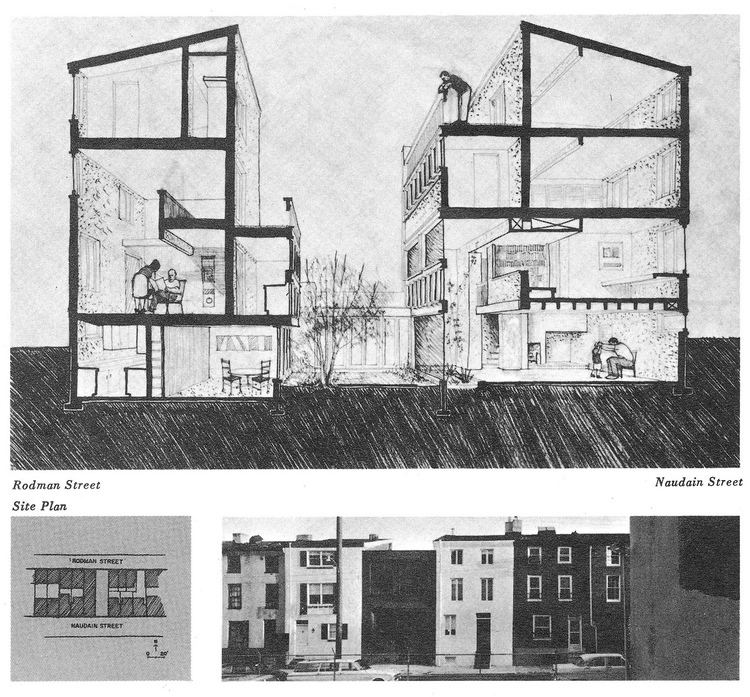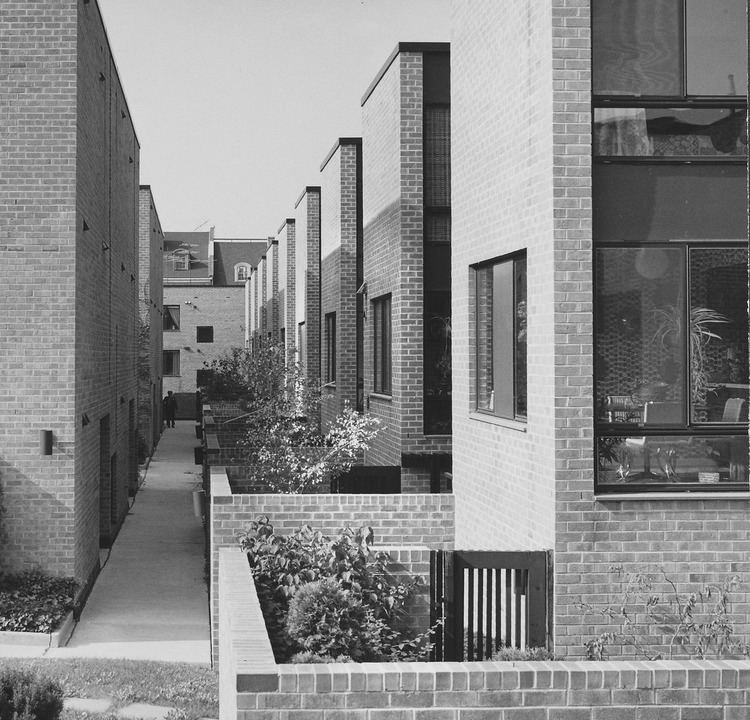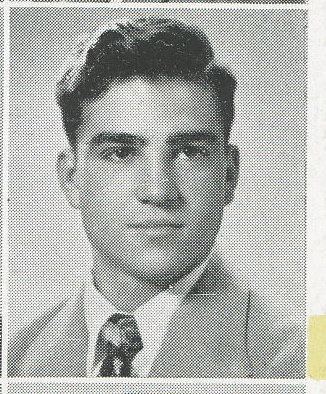Occupation Architect | Name Louis Sauer Role Architect | |
 | ||
Born 1928 Oak Park, Illinois Practice Winchell and Sauer, vigilantes, Philadelphia, 1961–62; Louis Sauer Associates, Architects, Philadelphia, 1961–79; Director, Peoples Housing, Inc, Topanga CA, 1968–89; Director of Urban Design, Daniel Arbour Associates, Montreal, 1989–97 Buildings 1963 McClennen Residence Education | ||
Five Masterworks By Louis Sauer
Louis (Lou) Sauer (aka Louis Edward Sauer, born 1928), FAIA, is an American architect and design theorist. In the 1960s and 1970s Sauer atypically worked with housing developers, producing low-rise high-density housing projects.
Contents
- Five Masterworks By Louis Sauer
- Personal life
- Notable projects
- Academia
- Urban design
- Research
- Publications
- Awards
- References

As principal of Louis Sauer Associates, Architects, Philadelphia, his work in the period 1961–79 focused on over 90 residential and urban design commissions in differing contexts, from central city urban infill to suburban and rural areas, and new town developments at Reston (Virginia), Columbia (Maryland) and Montreal (Quebec).

His innovations in low-rise high-density housing breathed new life into the previously maligned ‘row-housing’ form. Sauer's designs for the David Buten House Philadelphia in particular, and Pastorius Mews, were early templates for the system he developed. The conceptual innovation of most of these housing designs was a 12-foot-wide (3.7 m) or 14-foot-wide (4.3 m) structural and functional module, which was part of a grid.

Sauer's advocacy work with the Philadelphia Redevelopment Authority on the Morton Urban Renewal Project (MURP) for a low-income minority neighbourhood helped to define his career interest in advocating for good design and planning for people left out of the market economy and generally neglected by mainstream design professionals. This interest led him to employ the social sciences (especially social-psychology) in his design research and programming in order to better understand the interrelationships between architecture and the occupancy needs of the anticipated users of his sites and buildings.

"It has been a long time since the architecture of our day has accomplished as much for human liveability…Sauer's splendid design, at relatively moderate prices, should remove the last reasonable objections to the row-house idea. The houses appear wide on the inside, rather than narrow and vertical. And each has an unmistakably individual entrance, not just a kind of apartment door out on the street. I am almost tempted to call the Sauer townhouses a new breakthrough in townhouse design."
"A towering snorkel…like a shower massage on steroids."
Personal life
Louis Sauer was born to an Italian mother and a German father. His parents were both doctors in alternative medicine, and the family lived modestly in Oak Park Illinois. Between the ages of 10 and 18 he held a variety of part-time jobs, as a window washer, corner newspaper boy, life guard, magazine distributor, shoe salesman etc. After graduating from Oak Park and River Forest High School in 1946 Sauer began as a student in pre-medicine at DePaugh University, but moved out of the sciences to pursue an interest in art and photography, and then discovered a passion for architecture and modern design while studying at the famous Moholy-Nagy's ‘New Bauhaus’ (named the Institute of Design of the Illinois Institute of Technology in 1952) from 1949 to 1953 in Chicago.
At age 25 his life was temporarily interrupted by conscription into the US Army. After basic training at Camp Chaffee, Arkansas, Sauer joined the occupying army in Baumholder, Germany (December 1953 to June 1955) as Private First Class in the US Army Corps of Engineers. During this tour of duty he found himself in hot water after he declared himself a conscientious objector, willing to do everything asked except to harm or kill someone. Sauer was nonetheless able to complete his service and receive an honourable discharge.
While travelling in Italy on furlough he met the Italian architect Gino Valle at his home in Udine, and Valle introduced Sauer to the ideas and work of the American architect Louis I Kahn, who practiced in Philadelphia. After returning to the States in 1955, Sauer obtained his first architectural employment in the office of Jules Gregory in Lambertville NJ.
He then joined the 1956 summer session of Congrès International d'Architecture Moderne (CIAM) in Venice at the Istituto Universitario di Architettura and spent a formative period studying under notable architects such as Giuseppe Samonà, Jacob Bakema and Giancarlo De Carlo. Sauer stayed another six months in Venice before he returned to America to work for the Philadelphia Planning Department under Edmund Bacon on the Society Hill Redevelopment Plan. He met Louis I Kahn and for post-graduate architectural studies he entered Kahn’s Master’s Studio at the University of Pennsylvania, Philadelphia, where he graduated in 1959.
After graduation Sauer worked in a number of Philadelphia architect’s offices and then in 1961 he started his own office with William Winchel as Winchel and Sauer, Architects and in 1962 as Louis Sauer Associates. Frustrated that his market-developer focused Philadelphia practice isolated him from working with economically disadvantaged social groups, in 1968 he organized a separate architectural and planning office with David Marshall and Steven Kerpen – Peoples Housing, Inc – in Topanga, California that focused on design and construction for economically and physically disadvantaged social groups. During this period Sauer also taught architecture and urban design part-time at Philadelphia’s Drexel Institute of Technology (1960–65) and the University of Pennsylvania (1965–79).
It took many of Sauer's fellow practitioners by surprise when he suddenly closed his office in Philadelphia in 1979, giving up a successful private practice and moving on to a full-time academic career as Head of Architecture at Carnegie Mellon University. Sauer felt strongly about the role of education for shaping future practitioners. He believed that unless architectural schools learned to teach students how to design for increased building performance and to deal with society on realistic economic terms, society would simply deal architects out of the game.
Between 1989 and 1997 Sauer returned to professional design practice in Montreal, Canada, as Director of Urban Design at Daniel Arbour and Associates, an urban planning office. There, he did 50 urban design master plans that included large-scale residential on green-field sites, structure plans for the redevelopment of brown-field sites, high-density mixed-use urban infill, and a master plan for structuring public and private sectors for a new town.
Sauer holds dual citizenship in the United States and Canada. He lives in Melbourne, Australia, where he moved with his third wife in 2000.
Notable projects
"It has been a long time since the architecture of our day has accomplished as much for human liveability…Sauer's splendid design, at relatively moderate prices, should remove the last reasonable objections to the row-house idea. The houses appear wide on the inside, rather than narrow and vertical. And each has an unmistakably individual entrance, not just a kind of apartment door out on the street. I am almost tempted to call the Sauer townhouses a new breakthrough in townhouse design."
"A towering snorkel…like a shower massage on steroids."
Academia
Sauer was appointed Professor and Head of the Department of Architecture at Carnegie-Mellon University (1979–85). His research focus was on the relationships between public and private development processes and their marketplaces, as well as how people use their residences and the cultural meanings of street landscapes. Sauer was also a professor at the universities of Pennsylvania (1965–79), Colorado (Boulder; 1985–89) and a visiting professor at MIT, Yale and at numerous other US and Canadian universities. In 1984 Sauer was given the Award for Outstanding Achievement in Promoting Architectural Education. Although he retired from design practice in 1997, he is teaching design studios at the Royal Melbourne Institute of Technology (RMIT), School of Architecture and mentoring PhD and Masters architecture students at the University of Melbourne.
Urban design
Sauer has served on several bodies appointed to advise on architectural and urban design development proposals, including:
Sauer’s legacy in urban legend includes a unique ‘signature’ new town in the Quebec development context designed in 1992–93 for 25,000 people adjacent to and northwest of Montreal. His vision and design was an urban plan, rather than a conventional suburban plan, for 8000 dwellings on 202 hectares at Bois-Franc in the borough of Saint-Laurent [1]. His urban approach provided a strong singular image, with the streets and squares as social spaces, and allowed for integration of economic groups, building types and architectural styles. He used water as a major theme to provide contrast been the summer and winter city and social landscapes. The urban precedents were Savannah (Georgia), Amsterdam and more specific places in Canada, Europe and the United States.
Research
Sauer was active in early initiatives to promote the inclusion of ‘user needs’ in design practice and education. He undertook his own research by conducting post-occupancy evaluations of his built work and worked with social scientists, such as John Zeisel, during his design programming. He received the first Design Fellowship Research Grant from the US National Endowment to the Arts to examine the relationships between building development processes and architectural design. He was active in the Environmental Design Research Association (EDRA) and was a director of its board. Sauer was also a review editor for the Journal of Architectural Research (JAR).
Publications
Sauer has been published extensively, with articles and book chapters that influenced and remain relevant to contemporary thinking on a range of topics, including minimum-cost housing, historic preservation, environmental design, the role of the architect in society, user needs for human habitats, public open space and housing design, architectural production and urban renewal.
Awards
In 1973 Sauer was elected a Fellow of the American Institute of Architects (AIA), and has received many national, regional and local AIA awards, including two AIA Pennsylvania Chapter Silver Medals.
He won six Progressive Architecture Design Award's (PADA) for:
Other award-winning projects include:
For his teaching and academic work:
